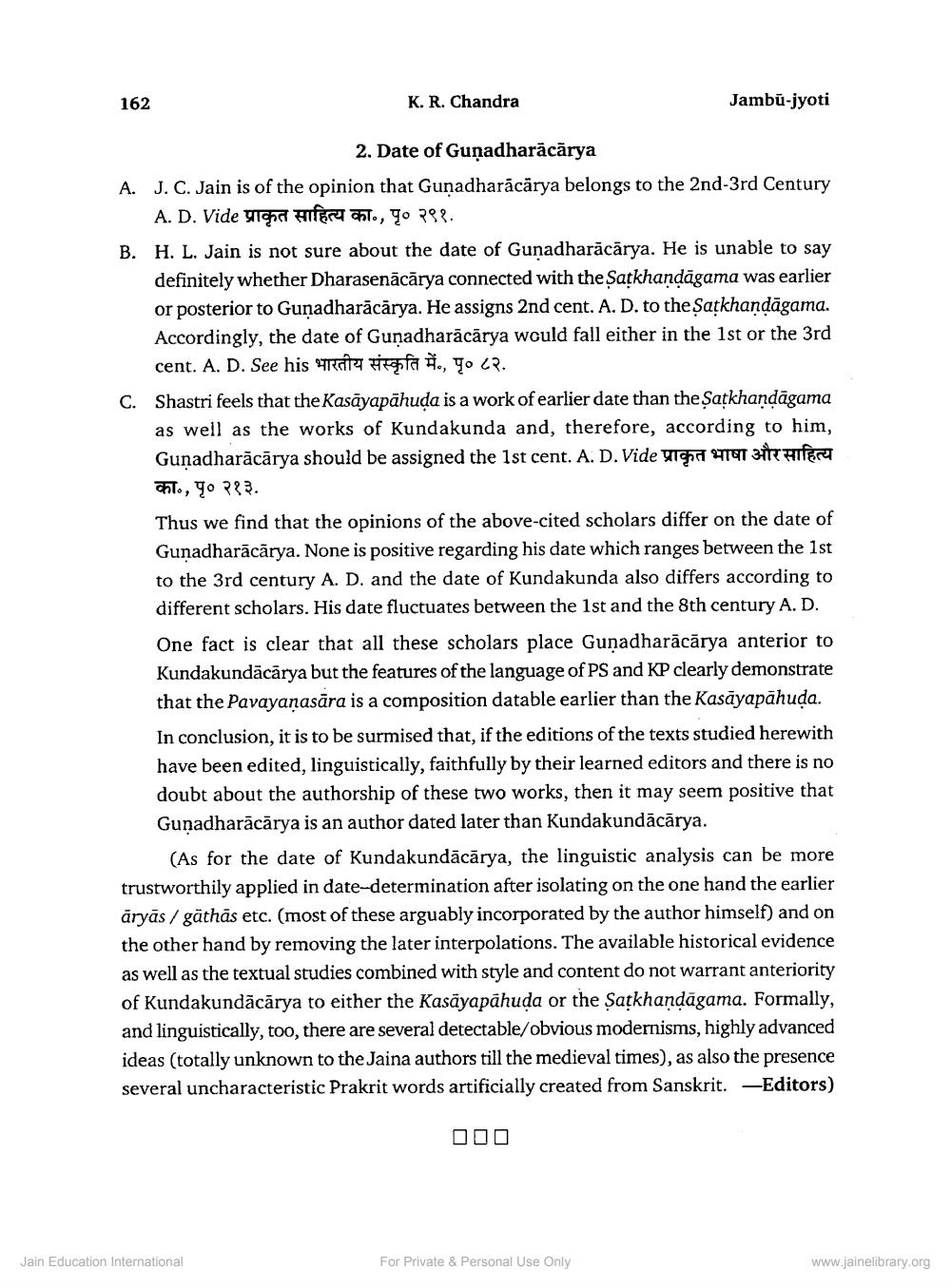________________
162
K. R. Chandra
2. Date of Gunadharäcārya
A. J. C. Jain is of the opinion that Gunadharācārya belongs to the 2nd-3rd Century A. D. Vide प्राकृत साहित्य का., पृ० २९१.
B. H. L. Jain is not sure about the date of Gunadharäcārya. He is unable to say definitely whether Dharasenācārya connected with the Satkhandagama was earlier or posterior to Gunadharācārya. He assigns 2nd cent. A. D. to the Satkhandagama. Accordingly, the date of Gunadharācārya would fall either in the 1st or the 3rd cent. A. D. See his भारतीय संस्कृति में, पृ० ८२.
Jambu-jyoti
C. Shastri feels that the Kasayapähuda is a work of earlier date than the Satkhandagama as well as the works of Kundakunda and, therefore, according to him, Gunadharācārya should be assigned the 1st cent. A. D. Vide ger en fanfice का., पृ० २१३.
Thus we find that the opinions of the above-cited scholars differ on the date of Gunadharācārya. None is positive regarding his date which ranges between the 1st to the 3rd century A. D. and the date of Kundakunda also differs according to different scholars. His date fluctuates between the 1st and the 8th century A. D. One fact is clear that all these scholars place Gunadharäcärya anterior to Kundakundäcārya but the features of the language of PS and KP clearly demonstrate that the Pavayaṇasära is a composition datable earlier than the Kasayapāhuḍa. In conclusion, it is to be surmised that, if the editions of the texts studied herewith have been edited, linguistically, faithfully by their learned editors and there is no doubt about the authorship of these two works, then it may seem positive that Gunadharācārya is an author dated later than Kundakundäcārya.
Jain Education International
(As for the date of Kundakundäcārya, the linguistic analysis can be more trustworthily applied in date-determination after isolating on the one hand the earlier äryäs/gāthās etc. (most of these arguably incorporated by the author himself) and on the other hand by removing the later interpolations. The available historical evidence as well as the textual studies combined with style and content do not warrant anteriority of Kundakundäcärya to either the Kasayapahuḍa or the Satkhaṇḍagama. Formally, and linguistically, too, there are several detectable/obvious modemisms, highly advanced ideas (totally unknown to the Jaina authors till the medieval times), as also the presence several uncharacteristic Prakrit words artificially created from Sanskrit. -Editors)
ᄆᄆᄆ
For Private & Personal Use Only
www.jainelibrary.org




